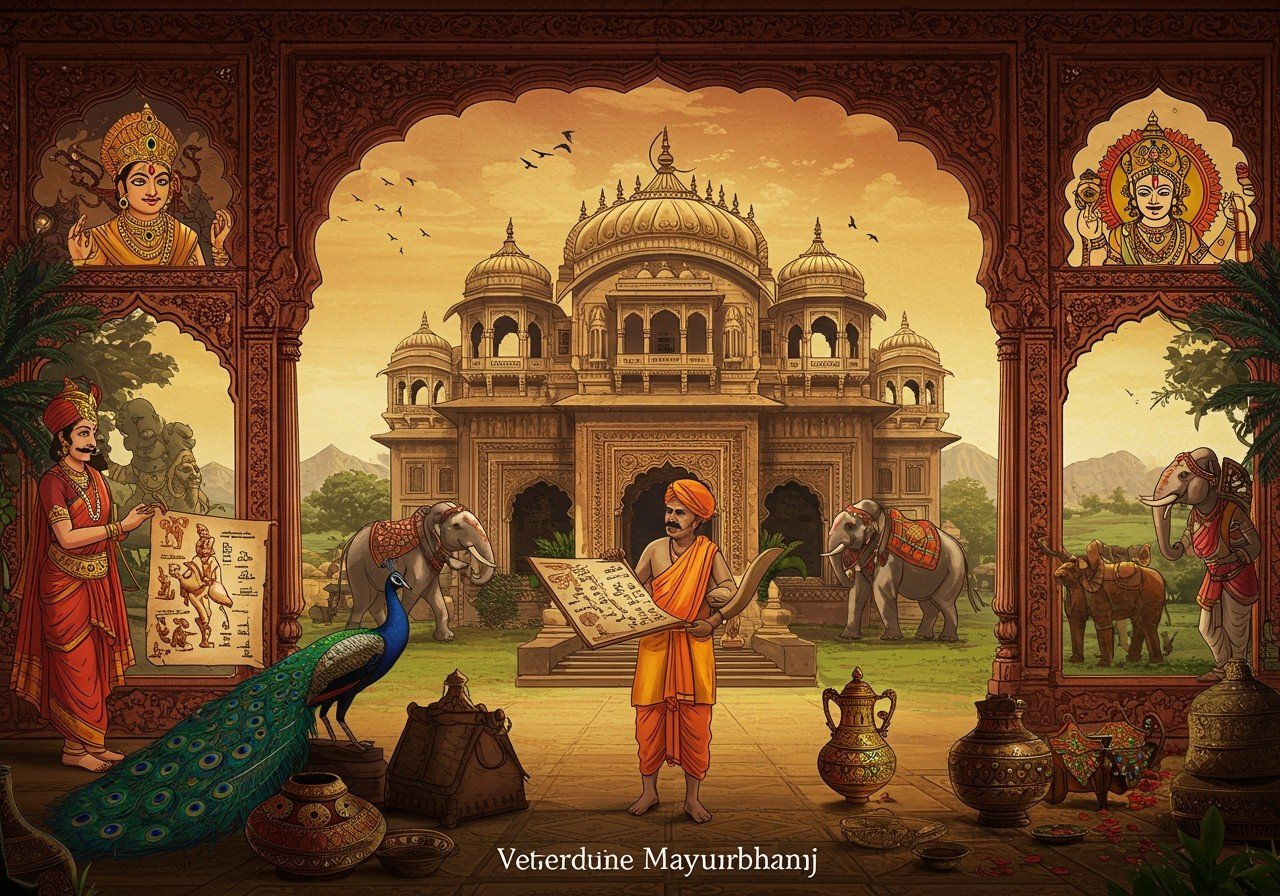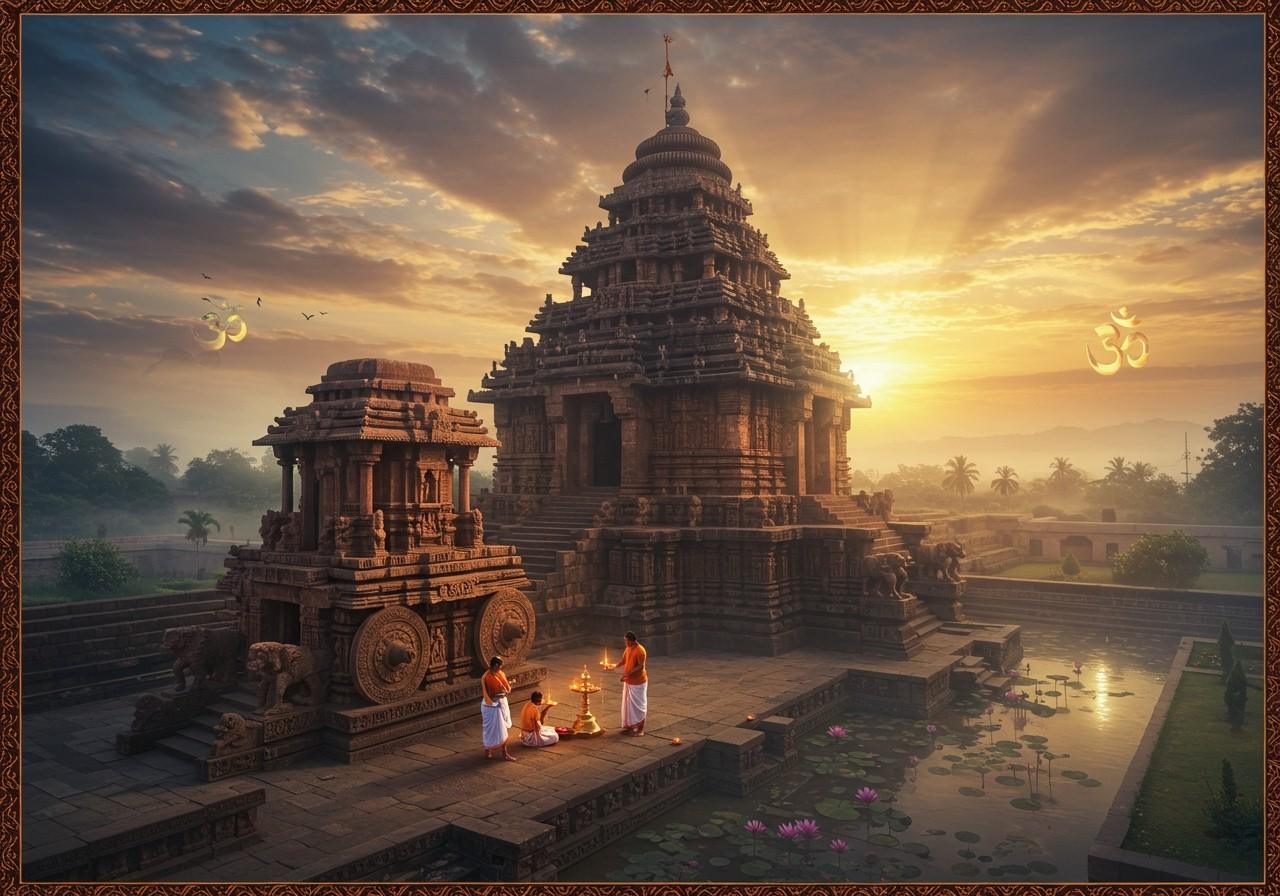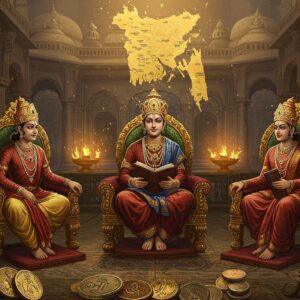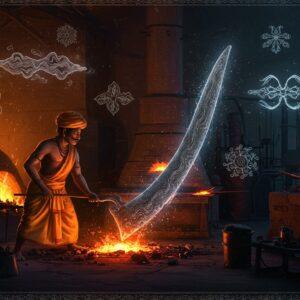
In the heart of Odisha lies a land where history isn’t just in books; it lives in the soil, in the rhythm of its dances, and in the spirit of its people. We’re talking about Mayurbhanj, a place that was once a magnificent princely state and today stands as a proud custodian of India’s cultural virasat (legacy). For those of us who feel a deep connection to our roots, understanding the story of Mayurbhanj is like listening to a fascinating tale from our grandparents, full of pride, tradition, and timeless wisdom.

The Story of Mayurbhanj: From a Princely State to a Modern Marvel
The name ‘Mayurbhanj’ itself tells a story, beautifully blending the legacies of two great dynasties—the Mayuras and the Bhanjas. The Bhanja dynasty, whose origins trace back to the ancient Khijjinga Mandala, has a fascinating founding tale. It is said that Adi Bhanja, the dynasty’s founder, was born from a peahen’s egg! This is why the peacock, or Mayur, became a sacred symbol, proudly featured on the state’s coat of arms. It’s a beautiful reminder of how our heritage is often woven with nature and folklore.
For centuries, the Bhanja kings ruled from their capital at Khijjinga Kotta (now known as Khiching). In the year 1400, a significant change occurred when King Harihar Bhanja moved the capital to Hariharpur, and the land was officially named Mayurbhanj. Over the years, the region saw the influence of Mughals and later became a British protectorate in 1829. Yet, through all these changes, the spirit of Mayurbhanj remained unconquerable.
After India found its freedom in 1947, Mayurbhanj stood as an independent unit for a short while before merging with Odisha on January 1, 1949, marking a new chapter in its glorious journey.
The Cultural Heartbeat of Odisha
When we speak of Mayurbhanj, we speak of a culture that is vibrant, diverse, and deeply spiritual. It is a land that has preserved its traditions with immense love and dedication.
The Soul-Stirring Chhau Dance
Mayurbhanj is world-famous for its unique and powerful Chhau dance. This incredible art form, recognized by UNESCO, is more than just a dance; it’s a form of storytelling that combines martial arts, acrobatics, and graceful movements. Watching a Chhau performance is a truly mesmerising experience, connecting you to the epic tales of our land without a single word being spoken. The energy, the costumes, the music—it all comes together to create pure magic.
A Rich Tapestry of Tribal Life
The district is also home to a significant tribal population, whose customs and rituals add beautiful threads to the cultural fabric of the region. Their simple, nature-centric way of life and colourful festivals are a reminder of the diverse traditions that make India so unique. This beautiful blend of cultures is a core part of what makes Mayurbhanj special, with a spirit that can be felt at sacred sites like the Upper Bagh Devi Temple.
Architectural Wonders and Royal Grandeur
The legacy of the Bhanja dynasty is etched in stone across Mayurbhanj. The magnificent Mayurbhanj Palace in Baripada is a stunning example of the architectural genius of that era. Walking through its corridors feels like stepping back in time, giving you a glimpse into the grandeur of the kings who once ruled here. Similarly, the region’s ancient temples, like the revered Simhanath Temple, are not just places of worship but also treasures of art and history.
The Enduring Legacy in Modern India
The kings of Mayurbhanj were not just rulers; they were visionaries. Maharaja Sriram Chandra Bhanj Deo, a true pioneer, played a crucial role in modernising the state. He brought in railways, started primary education for all, and even helped establish the first medical college in Cuttack. It was his foresight that allowed Jamsedji Tata to mine iron ore, leading to the birth of Jamshedpur and Tata Steel—a cornerstone of modern India’s industry.
Today, Mayurbhanj’s heritage continues to shine. It attracts tourists from all over the world, who come to witness its natural beauty, especially the famous Simlipal National Park, a UNESCO World Heritage site, and to experience its living culture.
Dressing the Part: Connecting with Tradition
In a place so steeped in tradition, the attire worn by its people, especially during rituals and festivals, holds deep meaning. From the grand costumes of the Chhau dancers to the simple, elegant garments of everyday life, clothing is a form of cultural expression. The Dhoti, for instance, is a timeless piece of Indian heritage. It symbolises purity and devotion, and wearing it during a puja or a family function connects us directly to our ancestors and their sacred practices.
At poojn.in, we understand this connection from the heart. That’s why we take great care in providing authentic, high-quality puja essentials and traditional items that help you honour your traditions with sincerity. For all your puja needs that bring the sanctity of tradition right to your doorstep, poojn.in is here for you. You can explore our wide range of spiritual products on our website or get in touch with us for a more personal experience.
For more details or to place an order, you can always call us at 03369029784 or send a message on WhatsApp at 9476142738. We are always happy to help you with your spiritual journey.
Exploring Common Questions About Mayurbhanj
Many people are curious about this historic land, and it’s wonderful to see this growing interest in our heritage. People often ask about the historical importance of Mayurbhanj, and the answer lies in its journey as a powerful princely state that beautifully blended tradition with progress, shaping the cultural and political landscape of Eastern India.
Another point of curiosity is Mayurbhanj’s vibrant tribal culture. The region is famous for this because its numerous tribal communities have lovingly preserved their unique customs, art forms, and traditions for centuries, creating a rich and diverse cultural mosaic that is truly special.
When planning a visit, many want to know about the key attractions related to its legacy. Must-visit places include the majestic Baripada Palace, the breathtaking Simlipal National Park, and the ancient temples that stand as proud reminders of the architectural brilliance of the past. These sites are not just tourist spots; they are portals to our history.
The role of the rulers, especially in development, is also a frequent question. The kings of Mayurbhanj were instrumental in its progress, acting as true patrons of education, health, and infrastructure, which laid a strong foundation for the region’s growth and prosperity.
Finally, it’s essential to understand why Mayurbhanj’s history is so important today. Delving into its past offers incredible insights into the evolution of Indian culture, the resilience of our people, and the immense contribution of such regions to our national identity. Its story is a vital part of the larger story of India.
Embracing a Timeless Heritage
Mayurbhanj is more than just a district on a map; it is a living, breathing testament to India’s glorious past and vibrant present. Its legacy teaches us the importance of holding onto our roots while embracing the future. By celebrating and preserving this timeless heritage, we not only honour our ancestors but also pass on a treasure of immeasurable value to the generations to come. The story of Mayurbhanj is a story of pride, resilience, and the enduring power of culture.


